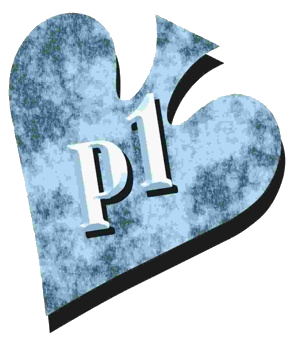May 5, 2020 | Last update: None

Bluffing is difficult in most poker games. This is true because average opponents prefer calling or raising to folding. That means almost every poker player loses money in the long run on bluff attempts. That’s the reality.
However, there are situations where bluffing is profitable. One that I teach students happens often on the flop in hold ’em games — both limit and no-limit.
Four conditions:
- (A) The flop must have exactly one scare card. (A scare card is ace, king, queen, or jack). Repeating: It must be exactly one — not none, two, or three. Or (B) the flop must contain a small pair and another rank less than jack. The small pair substitutes for a scare card. (Note that three-of-a-kind and a high pair do not meet this condition, although they could be included in a more complex formula.)
- There must be either one or two opponents. Three or more doesn’t qualify.
- Your hand must be a candidate for bluffing. This means it is almost certainly not the best hand. Any pair doesn’t qualify. An ace with a high kicker doesn’t qualify. An open-end straight draw doesn’t qualify. A flush draw doesn’t qualify. The reason those hands don’t qualify is that your hand has a good chance of winning without attempting a bluff, making checking a strong choice.
- There was no more than one raise before the flop. And if it’s a no-limit hold ’em game, the raise must be of routine size or smaller, not large. Obviously, this condition is met when nobody raised the big blind.
Examples
You: A♣ Q♠| Flop: 7♦ 8♦ K♠
Qualify: No. Reasonable chance of holding best hand.
You: 9♥ 7♥| Flop: A♥ 4♥ 3♠
Qualify: No. You have a flush draw.
You: K♥ 8♠| Flop: Q♥ 7♣ 4♣
Qualify: Yes.
You: 4♦ 4♣| Flop: A♣ 10♣ 8♥
Qualify: No. Pair has chance of being best hand.
You: 9♣ 8♣| Flop: 5♥ 4♠ 2♠
Qualify: No. Doesn’t include one scare card.
You: 10♦ 9♠| Flop: 4♣ A♥ J♥
Qualify: No. Two scare cards.
You: Q♥ 8♦| Flop: K♣ 4♥ 2♠
Qualify: Yes.
You: J♠ 10♣| Flop: 8♦ 2♣ 9♣
Qualify: No. Open-end straight draw.
You: K♥ J♦| Flop: 6♥ 8♣ 6♦
Qualify: Yes. Small pair on board substitutes for scare card.
Success rate
Whenever the four conditions are true, which happens quite often, your bluff attempt is likely to be mildly profitable. Note that this doesn’t mean you’ll usually win. Why not?
If you follow my standard advice to bet about 70 percent of the pot, your bluff only needs to succeed 41.18 percent of the time right now to break even. So, your bluffs could fail 58 percent of the time and you’d make money. But it gets better.
Even if you’re called, you might get lucky and still win. Or if the next card (turn card) is non-threatening, you might be able to make another profitable bluff attempt. Many players will make reluctant calls against your first bet, but give up against your second one, assuming they don’t help.
If you do this every time the situation qualifies, using the four conditions above, you still do a little better than break even. So, this flop bluff is slightly profitable, even without adding further factors. This is based on database analysis and computer simulations.
Mixture
However, although the bluff is profitable overall if the conditions are met, the result is a mixture of situational subcategories — some unprofitable, and some very profitable.
So, you might want to improve your return by considering more factors. This bluff attempt is unlikely to make money overall when the targeted opponents are aggressive or unpredictable. It works better against one opponent, even though it’s still better than break-even against two opponents. It also works better if all players involved acted in late positions before the flop.
Also, this bluff won’t work equally well for everyone. Your image matters. In particular, if the other active players are usually eager to call you, you might not want to make this attempt.
You probably will show long-range profit whether you’re first to act, last to act, or if one opponent has checked and another waits to act. But acting last is the most profitable.
Not too often
I caution you against trying this every chance you get. Although it’s theoretically profitable in most qualifying situations, observant opponents will notice that you’re betting too often on the flop and begin to call more frequently. This can make the bluff attempt costly overall.
For that reason, I recommend only using this bluff 30 to 33 percent of the qualifying times. Here’s an easy way to pick your bluff candidates: If your first private card received is a club (that’s 25 percent) or your cards were spade-club, in that order (that’s 6.4 percent), then bluff. The total is 31.4 percent, which is close enough.
In addition to being profitable, this bluff enhances your image by making you seem more lively. — MC
Follow-up link: → None
≡ Content above: Poker1 Phase 2a specification ≡
